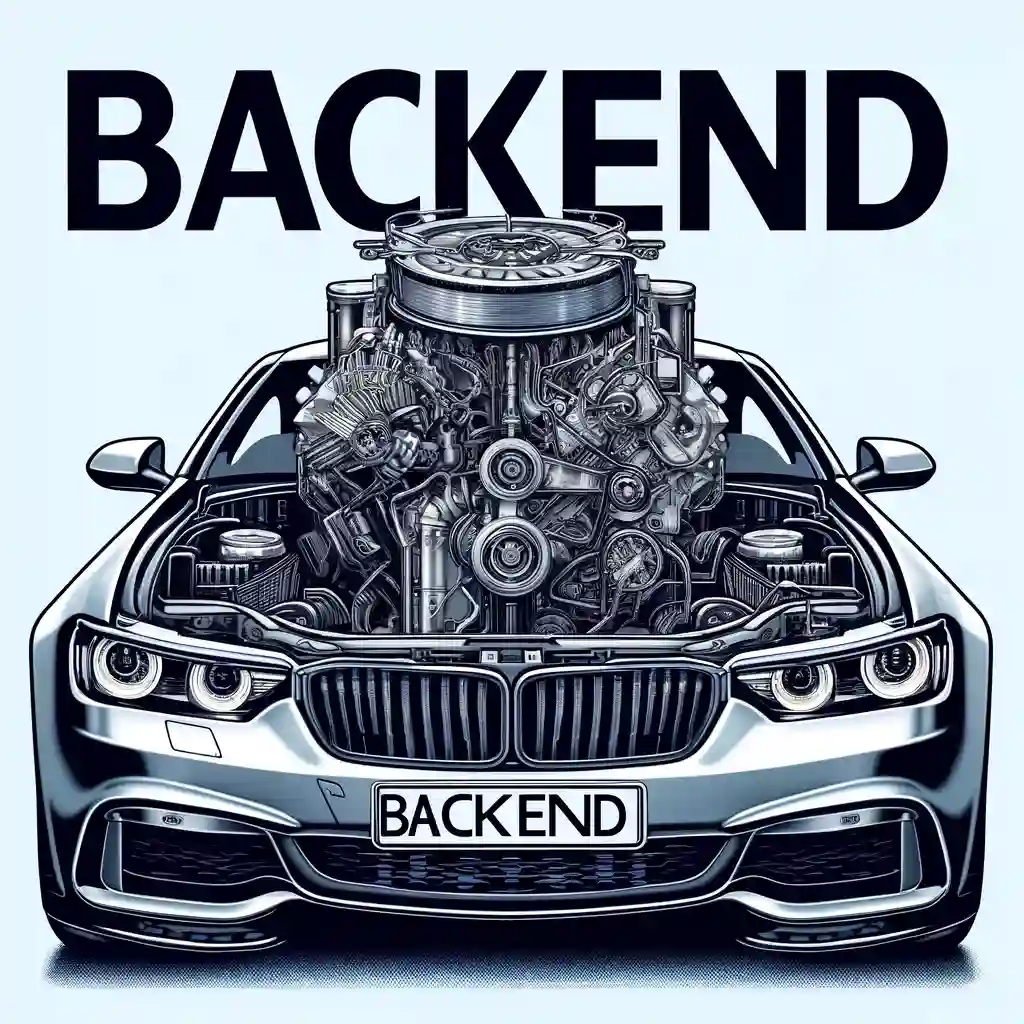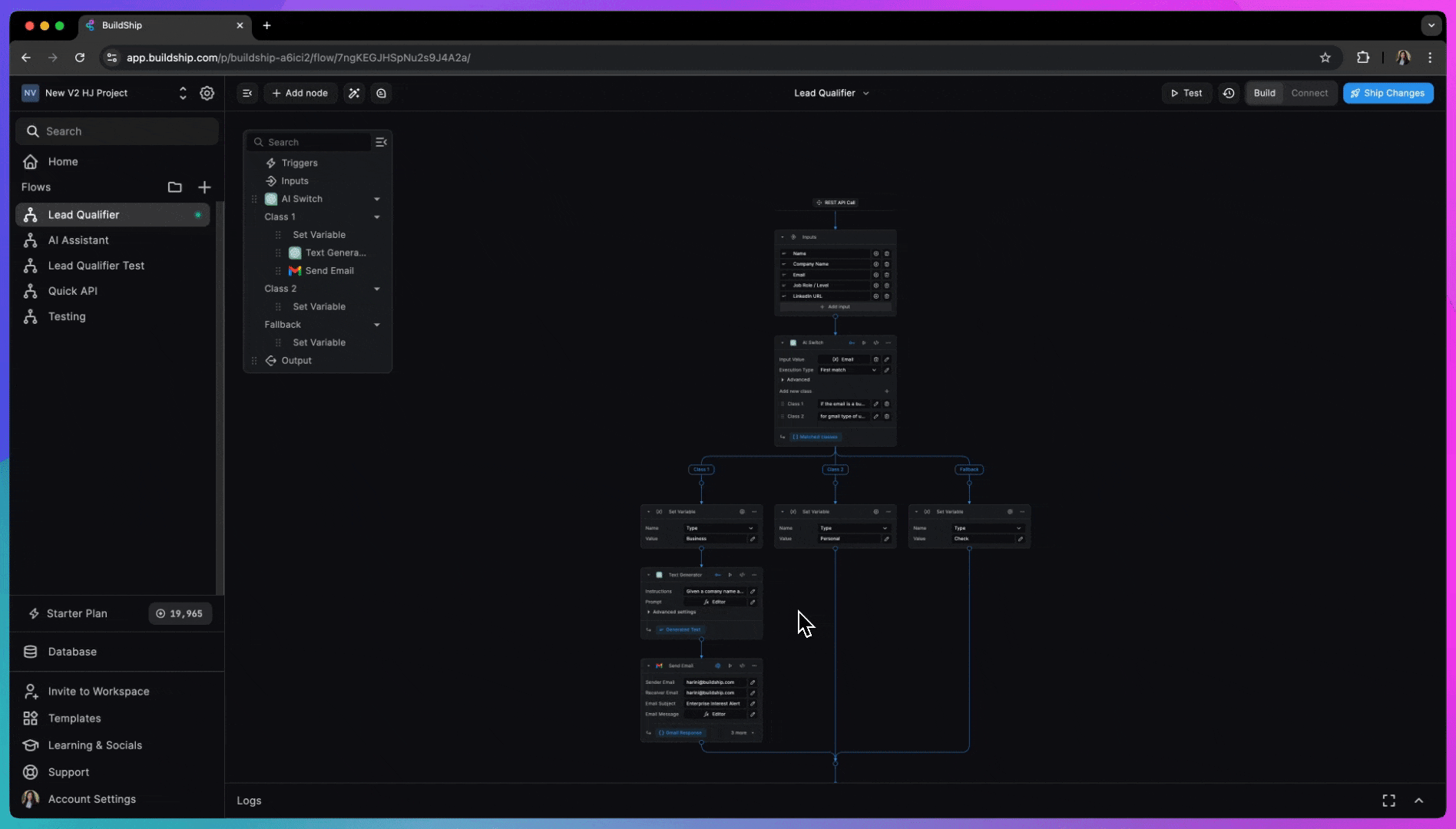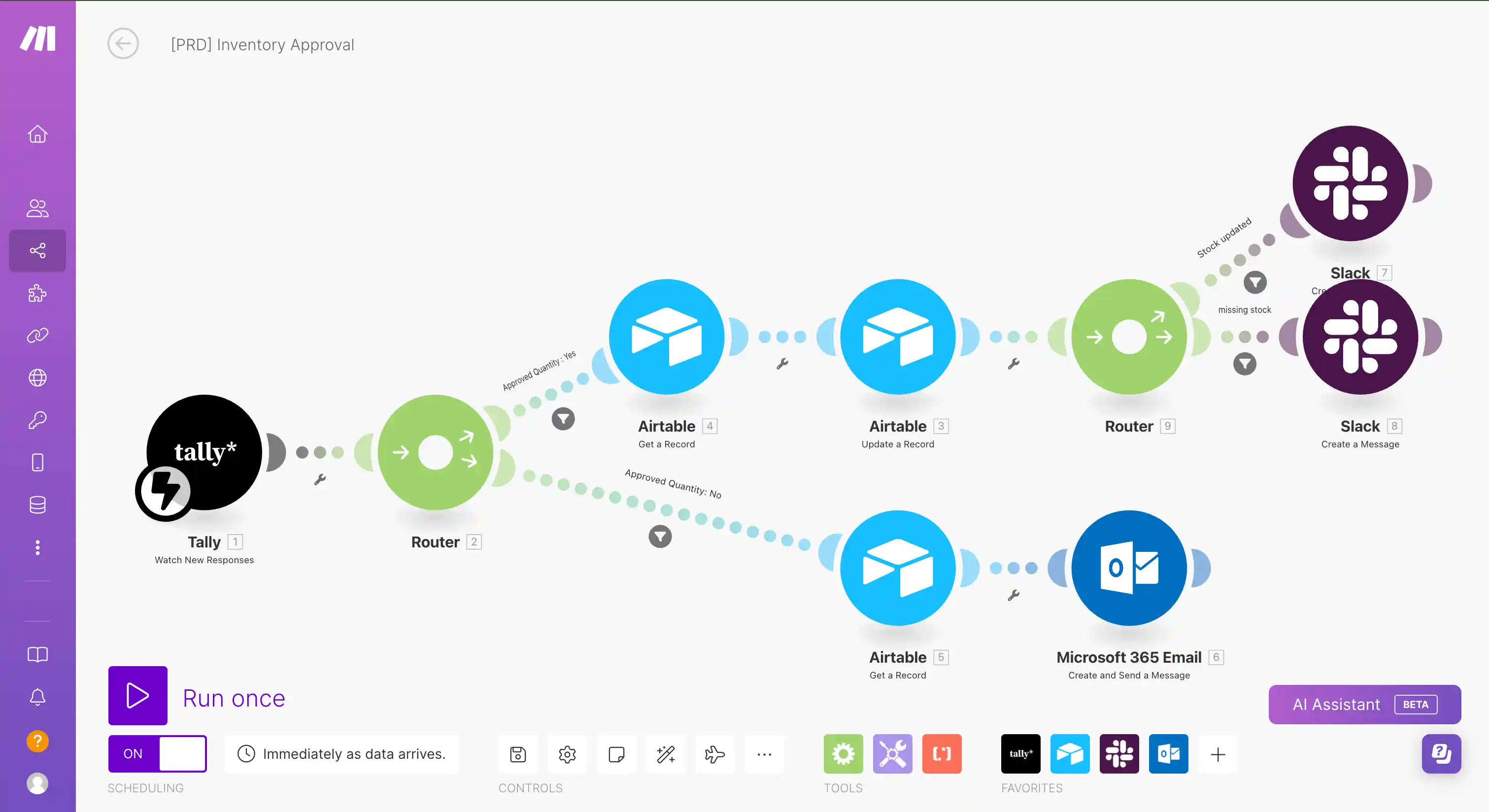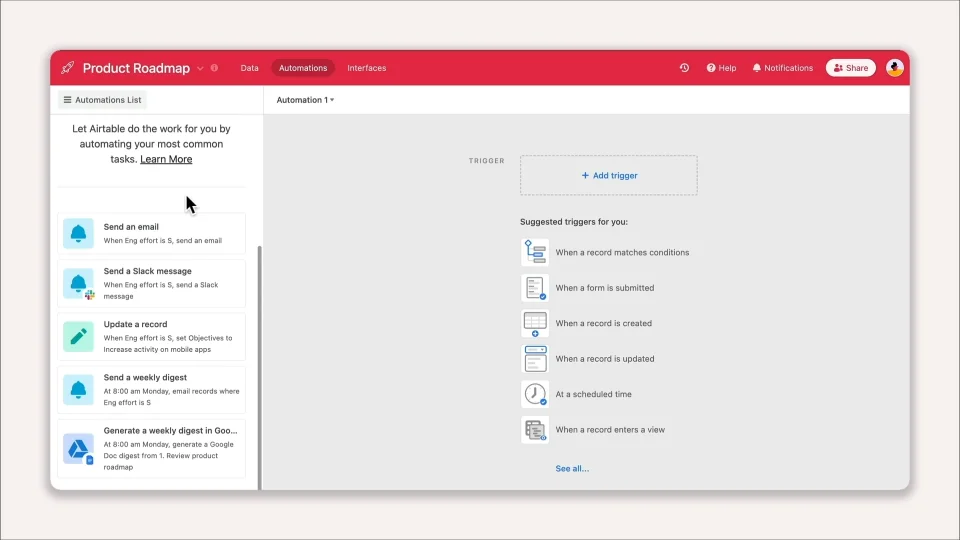Curious about simplifying backend development with no-code tools? You've landed in the perfect spot. Let's embark on this journey, unraveling the magic behind no-code backend builders, step by step.
I. 🏆 Quick Comparison: Best Backend Builders 🌐
II. Understanding No-Code Backend Solutions 🌟
In the digital era, the quest for streamlined, efficient development processes is relentless.
Enter backend builders: the unsung heroes enabling rapid, flexible, and user-friendly application development. They're not just tools; they're game-changers.
A. What is a Backend?

Think of a backend as the engine of a car.
While the car's exterior and dashboard (the frontend) are what you see and interact with, the engine under the hood (the backend) is what powers everything, processing data and executing operations that keep the car moving smoothly.
In tech, the backend handles the heavy lifting of data management, server interactions, and the core functionalities that make software applications run efficiently.
B. What is a No-Code Backend Builder?
Backend builders are tools that allow you to create and manage application backends without writing code. These tools work seamlessly with no-code databases to create comprehensive development solutions.
Backend Builders are well known for:
- Visual Development: Utilize no-code/low-code interfaces for database and logic creation.
- Rapid Deployment: Speed up development and go to market faster.
C. Why Use a No-Code Backend Builder?
- Accessibility: Makes backend development accessible to non-coders.
- Efficiency: Reduces development time and costs. This efficiency becomes even more apparent when considering your complete no-code stack architecture.
- Flexibility: Easy to iterate and adapt to changing needs.
D. Types of No-Code Backend Solutions
Not all backend solutions are created equal. Our comprehensive analysis covers four distinct categories:
- 🏗️ Pure Backend Builders: Complete backend infrastructure with databases, APIs, and authentication
- 🔄 Full-Stack Platforms: Integrated frontend and backend development environments
- ⚡ Automation & Integration: Backend functionality through workflow orchestration
- 📊 Database-First Approach: Backend capabilities built around database management
III. Top 10 No-Code Backend Builder Platforms 🥇
🏗️ Pure Backend Builders
1. Xano - The API Generation Powerhouse

Emerging as the robust spine for complex applications, Xano brings unparalleled strength to the no-code market.
A. Key Features
Xano platform stands out with its ability to construct powerful backends and APIs with ease. For developers looking to build comprehensive APIs, understanding how to build API with no-code approaches becomes essential.
Pros:
- Seamless Backend Creation: Craft powerful backends with background tasks and create API endpoints without coding.
- Intuitive Design Tools: Leverage schema builders and manage data relationships and user authentication effortlessly.
- Marketplace Integration: Access to a built-in API marketplace for extended functionality.
- Compliance Made Easy: Choose server locations for GDPR considerations.
Cons:
- Steep Learning Curve: Powerful, yet requires time to master.
- Pricing Structure: Potentially costly for startups or individual developers.
- Limited Third-Party Integrations: While growing, it may not match every need.
B. Pricing Plans
Xano's pricing is designed to accommodate various needs:
- Build (Free) : For developing and testing. Postgres database up to 100K records.
- Starter ($29/month): Production-ready apps. Unlimited API rate limits, unlimited database records, 100 GB image storage, GDPR compliance.
- Pro ($249/month): Enterprise scale. Dedicated infrastructure, role & permissions manager, ISO/SOC 2 & 3 compliance, HIPAA.
- Custom (Contact Sales): Ultimate scalability. Unlimited scaling, self-hosting options, dedicated IP, 24/7 monitoring, dedicated support, SSO, advanced security & logging.
2. Backendless - The Ultimate Flexibility Champion

Backendless stands as the versatile contender, offering an end-to-end solution for app development without a single line of code.
A. Key Features
Backendless official website shines with its comprehensive feature set:
Pros:
- Intuitive Drag-and-Drop: Effortless app design, making development accessible to all.
- Real-Time Data Management: Keeps your app data fresh and interactive.
- Codeless Logic Builder: Custom logic without a single line of code.
- Seamless Integrations: Connects smoothly with other services for enhanced functionality.
- Self-Hosting Option: Deploy on your own infrastructure for maximum control.
Cons:
- Complexity for Beginners: Rich features can overwhelm newcomers.
- Custom Code Limitations: While powerful, there are bounds to codeless customization.
- Integration Learning Curve: Maximizing third-party integrations may require additional learning.
B. Pricing Plans
Backendless offers flexible pricing tailored for different project scales:
- Free Plan: $0/month, including basic features like 50 API requests/minute, 10 database tables, and 1GB of file storage.
- Scale Plan: Starts at $15/month, offering unlimited API requests/month, 100 database tables, and 10GB of file storage.
3. Supabase - The Open-Source Backend Revolution
Supabase emerges as the open-source alternative to Firebase, offering developers complete control over their backend infrastructure.
A. Key Features
Supabase platform provides a powerful PostgreSQL-based backend solution:
Pros:
- PostgreSQL Foundation: Full SQL database with complex queries and relationships.
- Real-time Subscriptions: Listen to database changes and update clients instantly.
- No Vendor Lock-in: Open-source with self-hosting capabilities.
- Row Level Security: Advanced security with PostgreSQL's built-in RLS system.
- Auto-generated APIs: RESTful and GraphQL APIs created automatically from your schema.
Cons:
- SQL Learning Curve: Requires familiarity with relational database concepts.
- Newer Ecosystem: Smaller community compared to established alternatives.
- Limited NoSQL Features: Less suitable for unstructured data compared to document databases.
B. Pricing Plans
Supabase offers transparent, usage-based pricing:
- Free: 500MB database, 1GB bandwidth, 50MB file storage.
- Pro: $25/month, 8GB database, 250GB bandwidth, 100GB storage.
- Team: $599/month, additional collaboration features and priority support.
4. Firebase - Google's Comprehensive Backend Ecosystem

Firebase stands as the most popular backend-as-a-service platform, trusted by millions of developers worldwide for building scalable applications.
A. Key Features
Firebase platform offers a comprehensive suite of backend services:
Pros:
- Firestore & Realtime Database: NoSQL databases with real-time synchronization capabilities.
- Google Cloud Integration: Seamless access to Google's enterprise-grade infrastructure and AI services.
- Firebase Studio: New AI-powered development environment with Gemini integration.
- Comprehensive Authentication: Support for multiple providers and advanced security features.
- Cloud Functions: Serverless backend logic with multiple language support.
Cons:
- Vendor Lock-in: Proprietary platform owned by Google with limited portability.
- Complex Pricing: Costs based on reads/writes can become unpredictable.
- NoSQL Limitations: Less suitable for complex relational data structures.
B. Pricing Plans
Firebase uses a pay-as-you-go model:
- Spark (Free): 1GB storage, 50K reads/day, 20K writes/day.
- Blaze (Pay-as-you-go): Usage-based pricing starting from free tier limits.
- Custom Enterprise: Dedicated support and enhanced features for large organizations.
5. Directual - Enterprise-Grade Visual Backend Builder
/ima
Directual specializes in enterprise-grade no-code backend development with unique visual scenario building and Web3 capabilities.
A. Key Features
Directual platform offers advanced no-code backend capabilities:
Pros:
- Visual Scenarios: Create complex backend logic through visual workflow scenarios.
- Enterprise Performance: Claims 10x faster execution than competing platforms.
- Web3 Integration: Built-in blockchain and cryptocurrency wallet functionality.
- NoSQL Database: Scalable data storage with API generation.
- 22,000+ Users: Growing community of enterprise and startup builders.
Cons:
- Learning Curve: Visual scenarios require time to master for complex logic.
- Limited SQL Support: Primarily NoSQL-focused, less suitable for relational data.
- Smaller Community: Fewer resources and tutorials compared to mainstream platforms.
B. Pricing Plans
Directual offers pay-as-you-grow pricing:
- Free: Full platform access for learning and small projects.
- Startup: $29/month with increased usage limits.
- Scale: Custom pricing based on usage and enterprise needs.
🔄 Full-Stack Platforms
6. BuildShip - The AI-Powered Visual Workflow Builder

BuildShip revolutionizes backend development through AI-powered visual workflows, enabling rapid creation of APIs and automation without code.
A. Key Features
BuildShip platform combines AI innovation with visual development:
Pros:
- AI-Generated Nodes: Create custom integrations using natural language with AI assistance.
- Visual Workflows: Drag-and-drop interface for building complex backend logic and APIs.
- Multimodal AI Integration: Connect OpenAI, Hugging Face, Stable Diffusion, and other AI models.
- Ready-to-Use Database: Built-in Firestore or connect external databases (PostgreSQL, MySQL, Supabase).
- Code Export: Own your code with export functionality and self-hosting options.
Cons:
- Newer Platform: Less mature ecosystem compared to established alternatives.
- Credit-Based Pricing: Costs can accumulate with heavy workflow usage.
- AI Dependency: Relies heavily on AI for advanced features, which may vary in reliability.
B. Pricing Plans
BuildShip uses a flexible credit-based system:
- Free: 5,000 credits/month for testing and small projects.
- Pro: $25/month with 100,000 credits and advanced features.
- Team: $99/month with collaboration tools and priority support.
7. Bubble - The Visionary in Visual Programming
.gif)
Bubble revolutionizes the way we think about app development, offering the power to build without limits through its comprehensive full-stack platform.
A. Key Features
Pros:
- Drag-and-Drop Magic: Designing with ease, making complex apps accessible.
- Code-Free Complexity: Builds intricate applications, no coding required.
- Customization & Scalability: Tailors to needs, grows with your project.
- Built-in Database: Native database management with visual data modeling.
- Workflow Engine: Powerful backend logic through visual workflows.
Cons:
- Learning Curve: Despite no-code, mastering features takes time.
- Performance Considerations: Heavy apps may experience slowdowns.
- Flexibility vs. Control: Template-based, which might limit fine-tuning for advanced users.
B. Pricing Plans
Bubble's pricing structure caters to a range of needs:
- Free: Basic features with Bubble branding.
- Starter: $29 per month, for personal use and early-stage projects.
- Growth: $119 best for growing your business to the next level.
- Team: $349 per month, for advanced features and increased capacity.
- Enterprise: Custom pricing for full-scale commercial applications.
⚡ Automation & Integration
8. Make - The Automation Ace

Make, formerly known as Integromat, excels in automating workflows between apps, acting as a pivotal backend solution through integration orchestration.
A. Key Features
Make stands out with:
Pros:
- Visual Scenario Wizardry: Craft automation visually, making complex workflows intuitive.
- Massive Integration Network: Connects effortlessly with 1,000+ apps and services.
- Advanced Logic & Routing: Navigates complex workflows with sophisticated logic.
- Backend via Automation: Creates backend functionality through service orchestration.
Cons:
- Steep Learning Curve: Power and flexibility come with complexity.
- Integration Overload: The vast options can be overwhelming to navigate.
- No Native Database: Relies on external services for data persistence.
B. Pricing Plans
Offering a range from a free starter plan to comprehensive paid options, Make ensures scalability and robustness in automation endeavors.
- Free Plan: Ideal for starters, 1,000 ops/month
- Core Plan: Starting at $9/month, providing 10,000 operations.
- Pro Plan: Beginning at $16/month for 10,000 operations.
- Teams Plan: Starting at $29/month, this plan includes 10,000 operations.
- Enterprise Plan: Custom pricing for businesses with extensive automation requirements.
9. N8N - The Open-Source Automation Champion

N8N emerges as the open-source alternative to proprietary automation platforms, offering complete control over your workflow automation infrastructure.
A. Key Features
N8N platform provides powerful open-source automation:
Pros:
- Open-Source Freedom: Self-hosted with complete control over your automation infrastructure.
- 400+ Integrations: Extensive library of pre-built nodes for popular services and APIs.
- Code Extensibility: Write custom JavaScript functions for advanced automation logic.
- Visual Workflow Builder: Intuitive drag-and-drop interface for creating complex automations.
- No Vendor Lock-in: Own your workflows and data completely.
Cons:
- Self-Hosting Complexity: Requires technical knowledge for setup and maintenance.
- Smaller Community: Less extensive ecosystem compared to proprietary alternatives.
- Limited Cloud Features: Some advanced features require self-hosting setup.
B. Pricing Plans
N8N offers flexible deployment options:
- Self-Hosted: Free forever with unlimited workflows and executions.
- Cloud Starter: $50/month with 2,500 workflow executions.
- Cloud Pro: $500/month with 25,000 workflow executions and priority support.
📊 Database-First Approach
10. Airtable - The No-Code Database Maestro

Airtable, the beloved no-code database, excels in flexibility and user-friendliness, serving as an excellent entry point into backend development.
A. Key Features
Airtable excels in its simplicity and direct integration of automation within your databases, making it a highly accessible backend foundation:
Pros:
- Simplicity: Effortlessly manage varied databases with its intuitive drag-and-drop interface and customizable templates.
- Integration: Easily connect with a myriad of applications, enhancing your workflows without complex setups.
- Automation: In-built Automation to automate processes within your database, streamlining operations.
- API Generation: Automatic REST API creation from your database structure.
Cons:
- Complexity Limit: May not suit very intricate backend needs.
- Scalability Concerns: Performance can degrade with very large datasets.
- Limited Backend Logic: More focused on data management than complex backend operations.
B. Pricing Plans
Airtable offers plans for every scale:
- Free: No cost for up to 1,200 records per base.
- Plus: $10 per seat/month, billed annually, for up to 5,000 records per base.
- Pro: $20 per seat/month, billed annually, for up to 50,000 records per base.
- Enterprise: Price available upon request.
As your backend grows, understanding how to scale a no-code app becomes crucial for long-term success.
10 Key Takeaways
- No-code backend builders eliminate traditional coding barriers, making powerful API development accessible to non-technical users and accelerating time-to-market significantly.
- Xano leads in API specialization with robust backend generation and database management, while Backendless offers comprehensive BaaS solutions with self-hosting capabilities.
- Supabase represents the open-source revolution with PostgreSQL foundation and no vendor lock-in, challenging proprietary platforms like Firebase.
- Firebase maintains industry leadership through Google's ecosystem integration and innovative AI features, despite vendor lock-in concerns.
- BuildShip pioneers AI-powered workflows with visual automation and multimodal AI integration, representing the future of intelligent backend development.
- Different approaches serve different needs—pure backend builders for APIs, full-stack platforms for complete apps, automation tools for integration, and database-first for data management.
- Scalability considerations are crucial when selecting your platform—evaluate pricing structures, performance capabilities, and integration ecosystems to match your project's growth trajectory.
- Security and compliance features like GDPR-compliant server locations and Row Level Security should factor into your decision, especially for data-sensitive applications.
- Open-source alternatives like Supabase and N8N provide greater control and transparency, avoiding vendor lock-in while maintaining professional capabilities.
- Hybrid approaches work best—combining specialized backend builders with automation platforms and database solutions creates the most powerful and flexible development stack.
Ready to transform your development workflow? Explore these backend builders and discover how the right no-code platform can accelerate your next project while maintaining professional-grade functionality and scalability.
